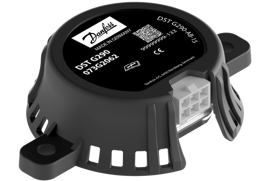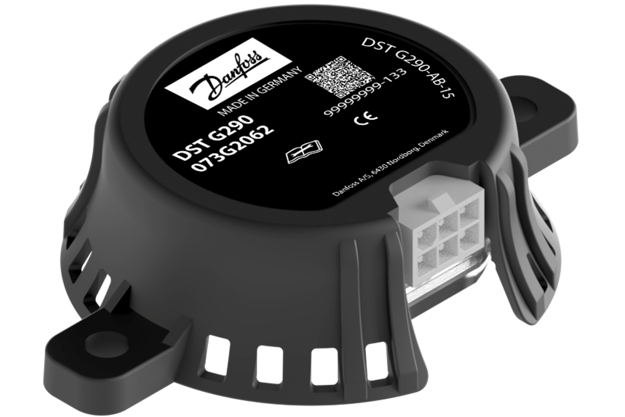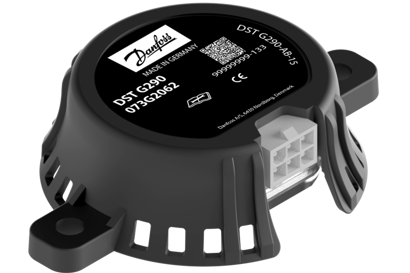The new line of gas detection sensors by Danfoss Sensing Solutions features photoacoustic technology and a patented inverted design and is intended for HVAC and commercial refrigeration systems.
As the HVAC/R industry transitions to low-GWP refrigerants, there is an increasing need for advanced leak detection systems that can offer quick, reliable leak detection in harsh environments. “At Danfoss Sensing Solutions, we are committed to supporting our customers in the refrigerant transition with high-quality, reliable gas sensing solutions,” says Iro Dragoumi, Segment Manager, HVAC&R, Danfoss Sensing Solutions. “Because propane is highly flammable, the A3 gas sensors must be highly selective to perform at the highest level. That’s why we’re introducing the DST G290 Gas Sensor with photoacoustic technology.”
Photoacoustic technology enables highly selective propane leak detection
While most gas sensing products currently on the market rely only on infrared (IR) light absorption measurements to detect propane molecules, the DST G290 by Danfoss Sensing Solutions combines both light and sound – photo + acoustic – sensing methods to achieve highly selective leak detection. “Photoacoustic (PA) technology operates based on the principle that gas molecules absorb IR light producing specific wavelengths, due to their unique molecular structure,” explains Iro. “This characteristic makes PA sensors exceptionally selective, allowing for precise detection of the target gas, in this case, propane.”
The sensor is designed to ensure that only gas can enter the chamber, while filtering out external factors, such as dust and other particles and liquids. It also contains an IR light source that only emits light at wavelengths absorbed by propane molecules. This tuned IR light source causes the propane molecules to vibrate. By modulating the light source, sound waves are generated and measured by the sensor’s built-in microphone. It also uses a sound filtering technique to block other sound frequencies, thus increasing the level of leak detection accuracy.
“By using both light and sound, PA technology combines molecular absorption physics, thermal dynamics and acoustic signal processing to deliver high accuracy, sensitivity and selectivity in propane gas detection,” explains Iro.
PA technology offers other advantages as well. “PA technology doesn’t require extra heaters, making it a more energy-efficient alternative to other gas sensing technologies. It covers a temperature range of -40 to 80 degrees Celsius and the full humidity range of 0 to 100.” Photoacoustic sensors offer unparalleled stability and reliability, making them the ideal choice for environments with fluctuating temperatures and humidity levels. The DST G290 sensors also have a response time of less than 30 seconds and a warm-up time of 6 seconds, further ensuring that leaks are detected as quickly as possible.
Focusing on system reliability and robustness
When designing the DST G290 Gas Sensor series, the Danfoss Sensing Solutions team wanted to provide customers with a reliable, robust sensor that could last for 15 years or more. “Our customers install sensors in harsh environments, where elements like humidity, dust, oil spray and ultraviolet light can impact sensor performance,” says Iro. “So, the DST G290 features our patented inverted design that protects the membrane from these elements.”
The sensor’s unique, patented positioning leverages the diffusion flow principle, ensuring that it’s unaffected by oil, dust and water spray. Sensor materials are resistant to prolonged UV exposure, and the sensor is resilient to other gases, including common household chemicals, so it performs consistently without degradation over time. “We’ve also encapsulated the sensor core within a semi-permeable membrane that allows necessary gases to pass through while blocking harmful substances. This membrane is instrumental in guaranteeing the sensor’s continuous, error-free operation for more than 15 years, significantly reducing the need for maintenance or replacements.”
As an additional enhancement to system reliability, the sensor also includes a full signal chain diagnostics system that continuously checks for faults or errors. The Danfoss Sensing Solutions team specifically engineered the DST G290 series to meet IEC 60335-2-40 requirements, and the sensors are IEC third-party certified, and its relay is ATEX compliant.
By offering a gas sensor specifically designed and certified to work with A3 refrigerants, Danfoss Sensing Solutions offers customers much-needed peace of mind in a rapidly changing industry. “Every transition is accompanied with a degree of uncertainty. Our customers are navigating in unfamiliar territory as they look for proven, reliable technology that can ensure the safe use of propane refrigerants in HVAC/R installations. With the DST G290 Gas Sensor series, we’ve addressed these concerns by developing a sensor that offers fast, accurate leak detection, minimizes the risk of false alarms and ensures reliable performance in the harshest of environments. And by producing it in Europe, we make certain that our customers benefit from a resilient supply chain with local suppliers,” concludes Iro.
Related products
-
if (isSmallPicture) {


 A3 refrigerant detection sensors
A3 refrigerant detection sensorsDST G290 A3 refrigerant gas sensor are developed to detect R290 (propane) refrigerant type, perfect for HVAC&R system builders, looking for performance and reliability for their A3 refrigerant compatible systems. These sensors meet the requirements of IEC and ATEX standards for HVAC equipment.



